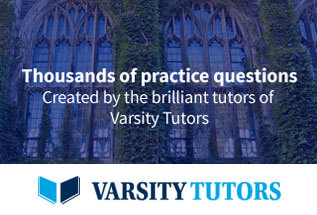This passage is adapted from Adam K. Fetterman and Kai Sassenberg, “The Reputational Consequences of Failed Replications and Wrongness Admission among Scientists", first published in December 2015 by PLOS ONE.
We like to think of science as a purely rational. However, scientists are human and often identify with their work. Therefore, it should not be controversial to suggest that emotions are involved in replication discussions. Adding to this inherently emotionally volatile situation, the recent increase in the use of social media and blogs by scientists has allowed for instantaneous, unfiltered, and at times emotion-based commentary on research. Certainly social media has the potential to lead to many positive outcomes in science–among others, to create a more open science. To some, however, it seems as if this ease of communication is also leading to the public tar and feathering of scientists. Whether these assertions are true is up for debate, but we assume they are a part of many scientists’ subjective reality. Indeed, when failed replications are discussed in the same paragraphs as questionable research practices, or even fraud, it is hard to separate the science from the scientist. Questionable research practices and fraud are not about the science; they are about the scientist. We believe that these considerations are at least part of the reason that we find the overestimation effect that we do, here.
[Sentence 1] Even so, the current data suggests that while many are worried about how a failed replication would affect their reputation, it is probably not as bad as they think. Of course, the current data cannot provide evidence that there are no negative effects; just that the negative impact is overestimated. That said, everyone wants to be seen as competent and honest, but failed replications are a part of science. In fact, they are how science moves forward!
[Sentence 2] While we imply that these effects may be exacerbated by social media, the data cannot directly speak to this. However, any one of a number of cognitive biases may add support to this assumption and explain our findings. For example, it may be that a type of availability bias or pluralistic ignorance of which the more vocal and critical voices are leading individuals to judge current opinions as more negative than reality. As a result, it is easy to conflate discussions about direct replications with “witch- hunts” and overestimate the impact on one’s own reputation. Whatever the source may be, it is worth looking at the potential negative impact of social media in scientific conversations.
[Sentence 3] If the desire is to move science forward, scientists need to be able to acknowledge when they are wrong. Theories come and go, and scientists learn from their mistakes (if they can even be called “mistakes”). This is the point of science. However, holding on to faulty ideas flies in the face of the scientific method. Even so, it often seems as if scientists have a hard time admitting wrongness. This seems doubly true when someone else fails to replicate a scientist’s findings. Even so, it often seems as if scientists have a hard time admitting wrongness. This seems doubly true when someone else fails to replicate a scientist’s findings. In some cases, this may be the proper response. Just as often, though, it is not. In most cases, admitting wrongness will have relatively fewer ill effects on one’s reputation than not admitting and it may be better for reputation. It could also be that wrongness admission repairs damage to reputation.
It may seem strange that others consider it less likely that questionable research practices, for example, were used when a scientist admits that they were wrong. [Sentence 4] However, it does make sense from the standpoint that wrongness admission seems to indicate honesty. Therefore, if one is honest in one domain, they are likely honest in other domains. Moreover, the refusal to admit might indicate to others that the original scientist is trying to cover something up. The lack of significance of most of the interactions in our study suggests that it even seems as if scientists might already realize this. Therefore, we can generally suggest that scientists admit they are wrong, but only when the evidence suggests they should.
The chart below maps how scientists view others' work (left) and how they suspect others will view their own work (right) if the researcher (the scientist or another, depending on the focus) admitted to engaging in questionable research practices.

Adapted from Fetterman & Sassenberg, "The Reputational Consequences of Failed Replications and Wrongness Admission among Scientists." December 9, 2015, PLOS One.





